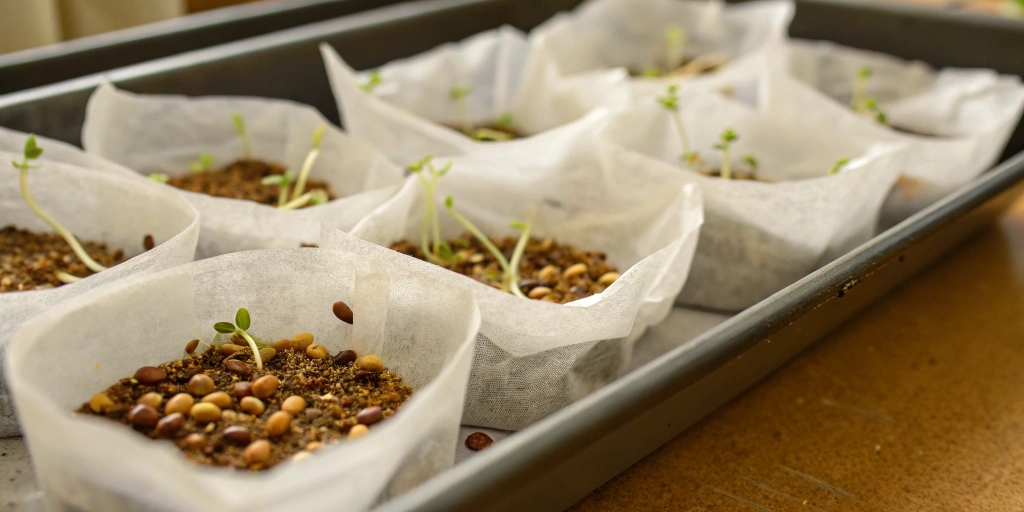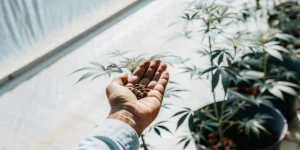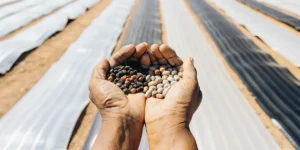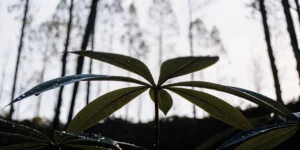Typical Germination Window
Fast vs. Slow Seeds
Seeds that sprout quickly often show a tiny white root in under 48 hours. Growers see these fast germinators push their cotyledons above the surface and take off. In contrast, slower seeds can take up to ten days before a visible taproot appears. During this waiting period, patience rewards careful handling. Excessive probing risks damaging the delicate embryo and stalling development. Consistent moisture and warmth remain your best allies for both fast and slow seeds.
When planning a grow cycle, cultivators frequently ask about cannabis seed germination time and set realistic expectations. Genetics play a major part: premium seeds from reputable breeders often react faster. However, even high-quality seeds display variability. Environmental factors, such as slight temperature drops or uneven moisture, can turn a normally quick-sprouting seed into a laggard. Adopting uniform practices helps standardize outcomes across your entire crop.
Strain Variability
Different cannabis varieties exhibit unique sprouting speeds. Many indoor growers note that sativa-dominant seeds tend to germinate faster than heavy indicas, thanks to their tropical heritage. Warm, humid conditions coax sativa shells to soften quickly, letting a taproot break free. In contrast, some indica seeds develop a tougher outer coating that takes longer to crack, so they need extra hydration or gentle scarification to kickstart.
Autoflowering seeds often germinate rapidly, thanks to ruderalis genetics bred for harsh climates. Hybrids blend traits, offering speeds that fall somewhere between pure sativas and indicas. Tracking germination performance across different packs helps you select varieties tailored to your timeline. Over time, you’ll recognize which strains align best with your schedule, whether you prefer a rapid start or don’t mind a longer wait for a sturdy sprout.
Stage-by-Stage Timeline
Once a seed absorbs moisture, its internal machinery switches on almost immediately. Within 12 to 24 hours it swells noticeably, and by day two you might spot the shell splitting. During days three and four the primary root extends several millimeters, penetrating the medium. Between days five and seven you typically see the first pair of true leaves form beside the seed leaves, signaling readiness for transplant.
You can map this process with a simple timeline to plan your next steps effectively. Day zero marks soak completion and placement in the chosen medium. Day one to two covers shell softening and cracking. Day three to four shows root elongation deepening your confidence to handle the seed. By day five to seven cotyledon unfolding guides your potting-up schedule. Tracking these milestones helps you spot delays early and troubleshoot swiftly.
Factors Affecting Speed
Temperature
Seeds germinate best in a consistent temperature range between 20 °C and 25 °C. That sweet spot keeps cellular enzymes active, fueling radicle growth without stressing the embryo. Temperatures below 18 °C slow biochemical reactions and prolong germination. Meanwhile, pushing heat above 28 °C risks overheating tissues and promoting fungal growth that can rot seeds before they even sprout.
To maintain an optimal climate, many growers rely on heat mats paired with thermostats. This setup delivers steady warmth directly beneath seeds or starter plugs. In climates with cool nights, placing a humidity dome over the tray can trap heat and prevent fluctuations. Monitoring daily with an accurate thermometer ensures you catch any dips or spikes, keeping all seeds on track for a speedy emergence.
Moisture Levels
Providing the right moisture balance proves crucial for successful sprouting. Seeds require full hydration to activate metabolic pathways, yet standing water suffocates the embryo by blocking oxygen. Overly dry conditions, on the other hand, hinder shell softening and prevent the taproot from pushing through. Striking that moisture equilibrium fuels steady progress.
Many cultivators use a spray bottle to mist their medium gently, avoiding puddles. Covering seeds with a clear lid or humidity dome traps moisture while allowing air exchange around the edges. Checking moisture levels twice daily and adjusting misting frequency prevents both drying out and drowning. Over time, you’ll dial in the ideal cycle of light sprays to keep seeds moist without risking root rot.
Seed Age
Fresh seeds almost always sprout faster and more reliably. Those stored fewer than twelve months often crack open within three days. As seeds age, their nutrient reserves dwindle and shells become more brittle. That aging reduces vigor and can extend germination to a week or more, while also lowering overall viability.
To preserve freshness, store seeds in a cool, dark, and dry environment. Airtight containers with desiccant packs kept inside a refrigerator are popular among seasoned growers. Avoid frequent temperature swings and exposure to light, both of which accelerate aging. When you pull packs from storage, work swiftly and reseal containers immediately to maintain ideal conditions and ensure each seed has the energy to germinate promptly.
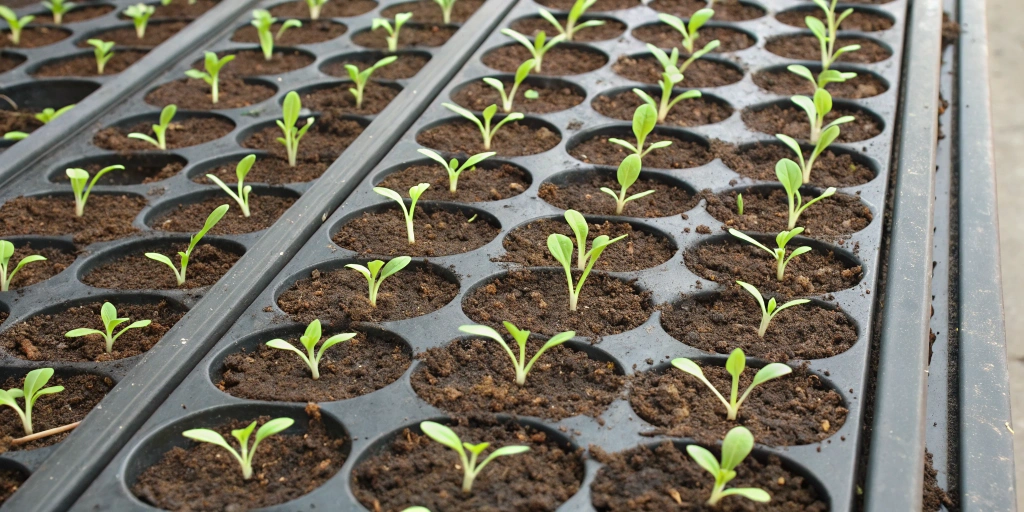
Germination Methods Compared
Direct Soil Planting
Planting seeds directly into soil or a soilless mix creates a natural, low-stress environment. You simply press each seed one centimeter deep, cover gently, and keep the medium lightly moist. Soil supplies nutrients and offers a stable microclimate from day one, reducing the need for early transplant steps.
That approach works well for new growers who prefer minimal handling. However, you sacrifice visibility into early root growth. A seed that fails to emerge requires a full wait of seven to ten days before you diagnose issues. Soil composition also varies in water retention, demanding careful watering schedules and well-draining mixes. Consistency remains key to prevent seeds from drying out or sitting too wet.
Paper Towel Technique
The paper towel method provides clear control and visibility. Place seeds between damp towels, seal them in a plastic bag, and nestle the setup in a warm spot. Within two to five days you can watch the radicle break free. Once roots reach a few millimeters, you transfer each seed to its final medium, minimizing guesswork.
This technique helps you identify non-viable seeds early and reduces wasted space. Yet handling delicate taproots takes practice; bruising or breaking roots during transfer can stunt growth. Always work under clean, germ-free conditions to avoid contamination. With careful hands and patience, this method often delivers consistent success and faster initial sprouting.
Starter Plugs
Starter plugs or cubes deliver consistent aeration and moisture control. Made from peat, coco-coir, or other substrates, they come pre-formed with a small seed hole. You drop each seed in, mist regularly, and let the plug maintain ideal dampness. Roots then expand through the plug wall, ready for quick transplanting.
This approach simplifies handling, seedlings lift out intact when you move them to larger pots. The uniform structure ensures each seed gets the same air-to-water ratio, often boosting emergence rates. For growers scaling up production, plugs reduce variability and cut transplant shock, helping seedlings maintain vigor from day one.
Monitoring Progress
Root Emergence Signs
The first visible sign of success comes when you spot tiny white root tips. You can see them through clear germination trays or when using transparent paper towels. That taproot normally emerges within two to five days after planting or soaking, marking the true start of growth.
Once the radicle shows, move the seed to fresh medium right away. Grasp the seed shell, not the fragile root, and settle it gently into the soil or plug. Prompt transfer prevents roots from curling or drying out. Consistent lighting and moisture after that transfer determine how quickly the seedling develops its cotyledons and true leaves.
Cotyledon Development
Cotyledons, or seed leaves, appear shortly after roots begin delivering water and nutrients upward. These initial leaves supply energy before true foliage forms. You’ll notice rounded, smooth-edged cotyledons unfolding above the soil or plug surface two to four days post radicle emergence.
Healthy cotyledons look plump and bright green. Yellowing or drooping indicates stress, often from overwatering or excess heat. Adjust environmental conditions immediately to revive seedlings. Providing gentle airflow and balanced moisture supports vigorous cotyledon growth, laying a strong foundation for the plant’s next developmental stages.
Troubleshooting Delays
If seeds haven’t sprouted by day seven, it’s time to inspect conditions closely. Verify temperature, moisture, and medium quality. Firm, unyielding shells may signal deep dormancy. You can conduct a gentle pinch test, shells that give slightly under pressure often still hold viable embryos.
When you spot mold or rot, remove affected seeds to protect the rest. Soaking healthy seeds in a mild hydrogen peroxide solution can eliminate pathogens before replanting. Dry them briefly on a paper towel, then reintroduce them to a clean germination setup. This reset approach can rescue viable seeds and restore progress toward successful sprouting.
Speeding Up Germination
Pre-soak Treatments
Pre-soaking seeds in water for 12 to 24 hours softens their shells and kickstarts internal processes. Adding a small amount of hydrogen peroxide to the soak water helps prevent fungal growth. This extra step can shave off days in your germination timeline and boost overall success rates.
After pre-soaking, allow seeds to dry briefly on a clean paper towel. This prevents them from sticking together when you plant them and ensures even placement. Then move each seed to its chosen medium, confident that moisture has fully penetrated the shell and the embryo rests on the brink of sprouting.
Gentle Heat Mats
Heat mats maintain a constant, optimal temperature range of 22 °C to 25 °C directly beneath germination trays or starter plugs. This consistent warmth accelerates enzyme activity and root expansion without overheating the rest of your grow area. Pair mats with thermostats to avoid temperature spikes that could harm seeds.
Applying gentle, localized heat proves invaluable in cooler climates or during off-season grows. Instead of cranking up whole-room heating, you target warmth right where seeds need it most. This strategy speeds sprouting, reduces energy costs, and keeps your other plants safe from unintended heat stress.
Aeration Practices
Oxygen fuels the seed’s respiration, powering healthy root and shoot development. Using a medium rich in air pockets, such as coco coir mixed with perlite, ensures proper gas exchange around the embryo. In paper towel setups, opening the bag briefly each day introduces fresh air and reduces condensation.
Overly wet conditions suffocate seeds, so balance misting with airflow. Small, frequent spritzes work better than a heavy soak once. As roots emerge, gentle airflow from a small fan helps harden seedlings. Fine-tuning this moisture–air balance accelerates emergence and sets the stage for vigorous growth in the days ahead.
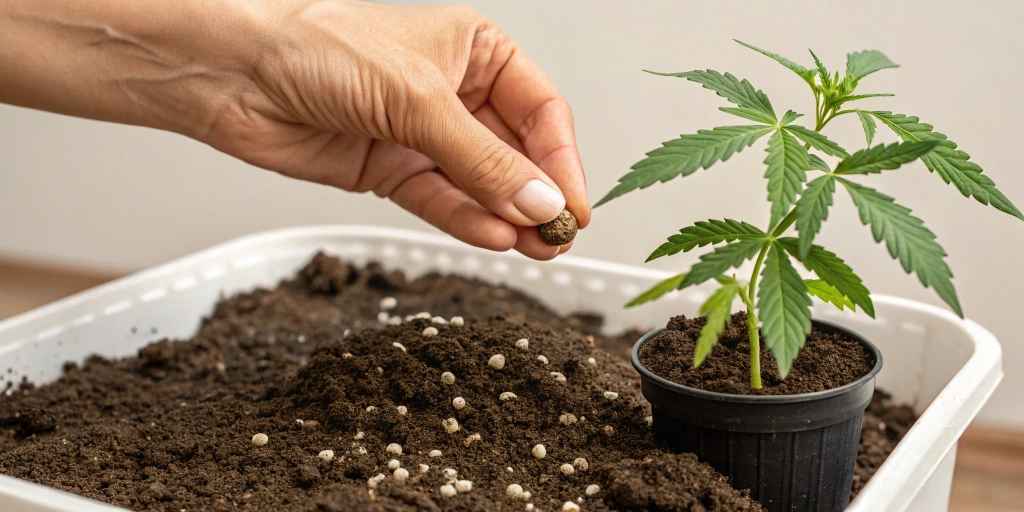
FAQs about cannabis seed germination time
What’s the fastest germination method?
Many growers find the paper towel technique delivers the quickest results. Under ideal warmth and humidity, white roots can emerge in as little as 24 hours. That visibility lets you transfer seedlings promptly, reducing the risk of seed failures. Consistent temperature and clean handling remain key factors in this rapid-start approach.
When is a seed officially failed?
If you see no sign of a taproot by day ten, that seed likely won’t sprout. By then, its stored energy reserves have depleted. Removing unproductive seeds prevents mold spread and preserves space for healthy ones. Starting fresh with new seeds often proves faster than trying to revive a dormant shell.
Can soaking water help?
Yes. Soaking seeds in a mild hydrogen peroxide solution before planting kills pathogens and softens shells. This simple step boosts moisture uptake and cuts down on fungal issues. Ultimately, it enhances success rates and influences how quickly seeds break through their shells.

